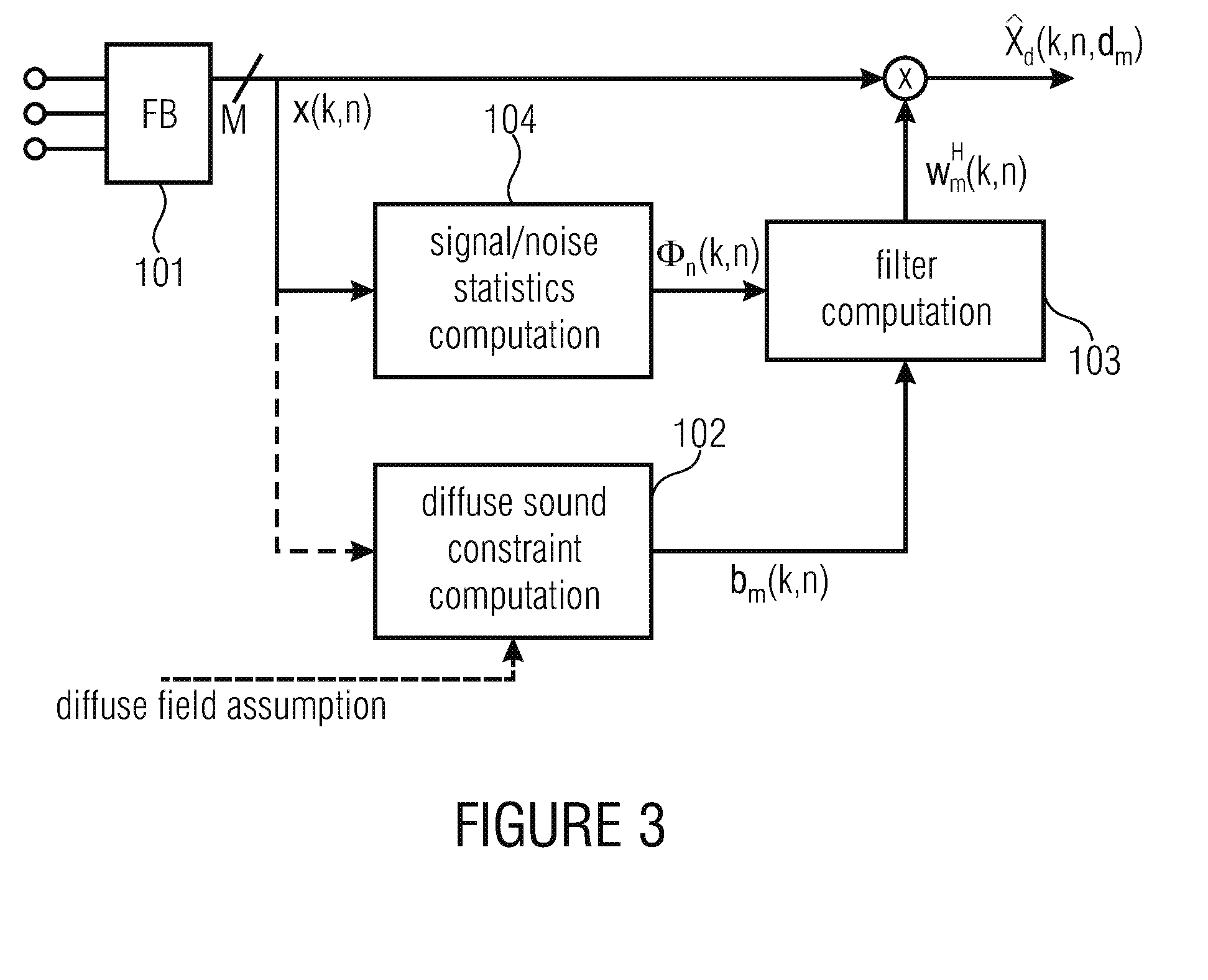Extraction of reverberant sound using microphone arrays
a technology of reverberant sound and microphone array, which is applied in the field of acoustic analysis, spatial sound recording, spatial filtering, etc., can solve the problems of poor performance when multiple sources are used, unoptimized multi-channel filtering, and inability to yield a suitable directivity pattern for capturing diffuse sound
- Summary
- Abstract
- Description
- Claims
- Application Information
AI Technical Summary
Benefits of technology
Problems solved by technology
Method used
Image
Examples
Embodiment Construction
[0022]The terms “direct sound” and “diffuse sound” are defined as follows.
[0023]Direct sound: sounds that arrive from mainly a specific prominent direction at the microphones. The direct sound can represent for instance the sound travelling directly from the sound source to the microphone or a distinct room reflection. Direct sounds can be for instance plane waves or spherical waves with a specific direction of arrival. When the direction of arrival of a direct sound is known, one can compute the relative transfer function of the direct sound between the microphones given that the microphone geometry is known.
[0024]Diffuse sound: sound that arrives at the microphones from all directions. The diffuse sound can represent for instance the later reverberation present in a room. Typically, no prominent direction-of-arrival can be associated with a diffuse sound (isotropic sound field), i.e., the sound is arriving with equal mean power from all directions. Moreover, the relative transfer ...
PUM
 Login to View More
Login to View More Abstract
Description
Claims
Application Information
 Login to View More
Login to View More - R&D
- Intellectual Property
- Life Sciences
- Materials
- Tech Scout
- Unparalleled Data Quality
- Higher Quality Content
- 60% Fewer Hallucinations
Browse by: Latest US Patents, China's latest patents, Technical Efficacy Thesaurus, Application Domain, Technology Topic, Popular Technical Reports.
© 2025 PatSnap. All rights reserved.Legal|Privacy policy|Modern Slavery Act Transparency Statement|Sitemap|About US| Contact US: help@patsnap.com



